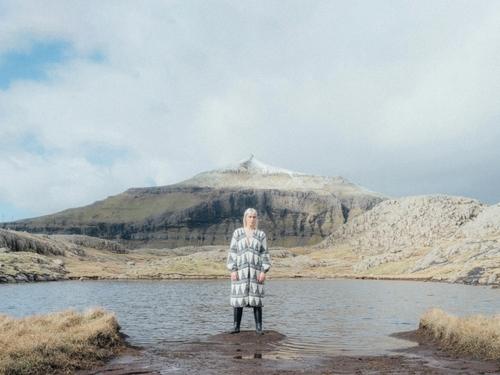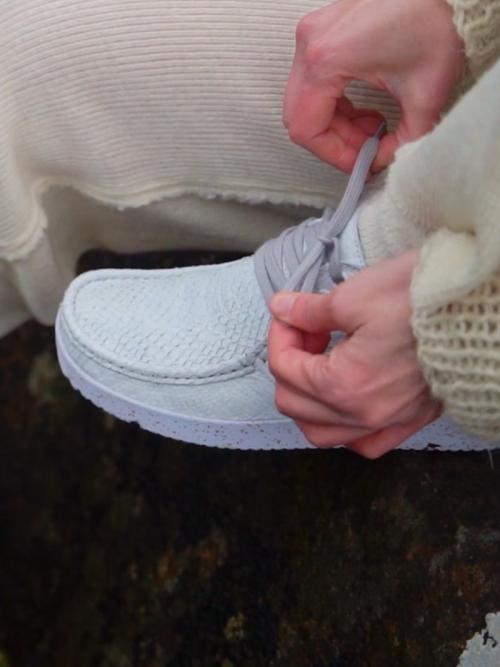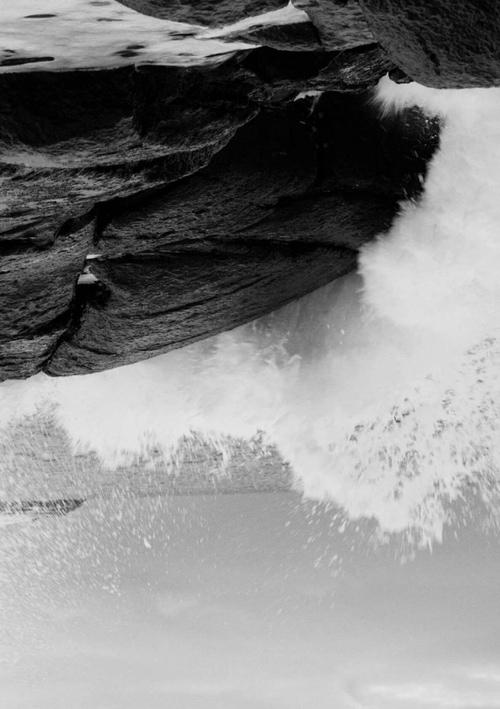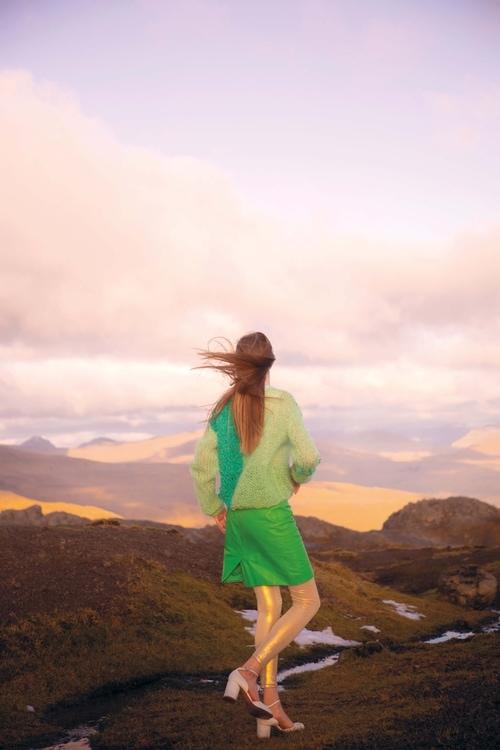the history of guðrun & guðrun
August 09, 2017
Very few things grow on the small archipelago in the North Atlantic and for centuries the sea and mountains have been the only food source there. Vegetation is sparse, there are no trees and only rhubarb and potatoes seem to thrive there. The sea gave most of the food and the birds and sheep had equally high value to the people.
Ull er Føroya Gull // Wool is the Faroese Gold goes the old saying. For centuries the wool protected the Faroese from the rough and wet climate. The wool was spun and processed in the Roykstova (a smoke room, where the hearth was situated and with a smoke hole in the roof ridge. The Roykstova served as kitchen, workroom, living room, and as sleeping quarters in the older days. It was in the Roykstova that the people spun and processed the wool, and knitted clothes. Knitting was a job for both men and women and it was during the long and cold evenings that the people gathered in the Roykstova and while knitting told sagas of vikings, trolls and sung old folk ballads.
Fast forward to the year 2000.
Growing up on the Faroe Islands, the Guðruns were taught to take very good care of the sparse resources the islands hold which basically include fish and sheep. Suddenly the consequence of a higher living standard and fast life resulted in that most old values were neglected. Knitted goods were traded for cheap imported knits and lamb skins had for a long time not been considered for clothing as functional outerwear took over. The lamb skins that once had multiple functions were now burned.
Knitting was considered old-fashioned and something that grandmothers did. The great knowledge of knitting that had been inherited for centuries was about to be forgotten.
At this time Guðrun Rógvadóttir was partner in a consultancy in Denmark and working with European Union projects in Eastern Europe and the Middle East. Guðrun Ludvig had just returned to the Faroe Islands after studying design in Denmark for some years and was struggling in an environment with no few to non possibilities for a designer.
The two Guðruns did not know each other. Rógvadóttir had read an article in the newspaper about this designer that had returned to the Faroe Islands and that had developed some styles for a local company. She called her and asked if she could come by and discuss some ideas.
- We clicked from the first meeting as both saw something in the other Guðrun that we did not have ourselves. We could see that we could compliment each other.
While earning for a living working in a nursery Ludvig stayed in close contact with Sabine Poupinel in Copenhagen. Sabine encouraged her to look into hand-knit and find her niche there as she was surrounded with traditions and knowledge about craftsmanship in knit. Every once in a while Guðrun sent some sweaters to Sabine and they sold well.
The first thing the Guðruns did was sending some lamb skins to different tanneries to see which qualities could be developed. Samples from an Icelandic tannery made designer Ludvig promptly see the potential in the quality for making not only the originally planned sleeping-bags but also garments.
Ludvig started making samples in her basement. They started selling lambskin coats and jackets locally and sales went well. So well that Ludvig had difficulty keeping up with the production in the basement.
The dream was always to go further. In 2002 the brand applied and were approved to show at CPH Vision in Copenhagen the leading trade fair in Denmark for high-end brands at the time. With too few lamb-skin samples the Guðruns had decided to take some of Ludvig’s hand-knit along to the show. The hand-knitted pieces received the greatest interest and the most interested buyers were Japanese. This was a huge compliment as the Japanese are known to be forward thinking in fashion and ways of working with style. The Guðrun took this as a call telling them that the focus should be on hand-knit and to look towards the Japanese market. The interest from the Japanese has been there ever since.
Next step for the company was to start a work-shop on the Faroe Islands. This was in 2005. It was in the back of an interior shop and every time they sold a pair of slippers Ludvig would text Rógvadóttir and tell her.
Guðrun & Guðrun’s first fashion show was in 2006. The show took place in a big hall in a shipyard in Tórshavn on the Faroe Islands. It was very spontaneous and decided only a couple of days prior. There was no official marketing and no social media at that time but the mouth to mouth method made 500 people from the city come and see the show. It was amazing and exhausting.
It could only be achieved with a lot of help from family and friends. Rógvadóttir remembers that late that night on the way home Ludvig said the famous words – ”I hope this doesn’t mean that we have a lot of customers coming to the shop to buy as we only have very few sweaters in stock”. Rógvadóttir’s husband and her brother had worked non-stop to make this happen and they just looked at each-other thinking – why the hell did you do this all for if not for selling?…
The show helped to rise awareness of the brand and along with the articles in the newspapers from the show and stories about orders from Tokyo, the Guðrun & Guðrun brand started to rise.













